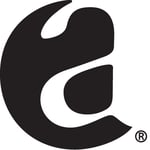Minion Regular
Minion Pro Italic
Minion Pro Medium
Minion Pro Medium Italic
Minion Pro Semibold
Minion Pro Semibold Italic
Minion Pro Bold
Minion Pro Bold Italic
Minion Std Black
Minion Condensed Regular
Minion Pro Condensed Italic
Minion Pro Medium Condensed
Minion Medium Condensed Italic
Minion Pro SemiBold Condensed
Minion Pro SemiBold Condensed Italic
Minion Pro Bold Condensed
Minion Pro Bold Condensed Italic
Minion Pro Caption Regular
Minion Pro Italic Caption
Minion Pro Medium Caption
Minion Pro Medium Italic Caption
Minion Pro SemiBold Caption
Minion Pro SemiBold Italic Caption
Minion Bold Caption
Minion Pro Bold Italic Caption
Minion Pro Condensed Caption Regular
Minion Pro Condensed Italic Caption
Minion Pro Medium Condensed Caption
Minion Pro Medium Condensed Italic Caption
Minion Pro SemiBold Condensed Caption
Minion Pro SemiBold Condensed Italic Caption
Minion Pro Bold Condensed Caption
Minion Pro Bold Condensed Italic Caption
Minion Pro Display Regular
Minion Pro Italic Display
Minion Pro Medium Display
Minion Pro Medium Italic Display
Minion Pro SemiBold Display
Minion Pro SemiBold Italic Display
Minion Pro Bold Display
Minion Pro Bold Italic Display
Minion Pro Condensed Display Regular
Minion Pro Condensed Italic Display
Minion Medium Condensed Display
Minion Pro Medium Condensed Italic Display
Minion Pro SemiBold Condensed Display
Minion Pro SemiBold Condensed Italic Display
Minion Pro Bold Condensed Display
Minion Pro Bold Condensed Italic Display
Minion Pro Subhead Regular
Minion Italic Subhead
Minion Pro Medium Subhead
Minion Pro Medium Italic Subhead
Minion Pro SemiBold Subhead
Minion SemiBold Italic Subhead
Minion Pro Bold Subhead
Minion Pro Bold Italic Subhead
Minion Pro Condensed Subhead Regular
Minion Pro Condensed Italic Subhead
Minion Pro Medium Condensed Subhead
Minion Medium Condensed Italic Subhead
Minion Pro SemiBold Condensed Italic Subhead
Minion Pro SemiBold Condensed Subhead
Minion Bold Condensed Subhead
Minion Pro Bold Condensed Italic Subhead
